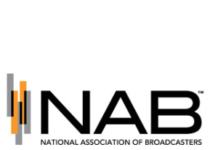
At its launch in 2014, radio pinned a lot of hope on Amazon’s Alexa to bring radio back into the American home. As Alexa numbers dwindle ten years later, Amazon is planning a huge revitalization for the AI voice assistant that could bring that hope back to the industry.
This overhaul will be the most substantial change to the platform since its inception and introduces a tiered service model that may include a monthly fee – a first for the typically free service.
According to Reuters, the new system, internally named “Banyan” and “Remarkable Alexa,” aims to enhance the user experience with more nuanced and conversational AI capabilities. Amazon’s vision for Remarkable Alexa includes creating an interaction that is less robotic and more akin to human conversation, with potential features that could understand and execute complex commands without repetitive prompts.
The aim is to make Alexa a more proactive and integral part of users’ daily lives, extending its utility beyond simple commands to more complex home automation tasks. The impetus for the change largely involves how Alexa has still failed to turn a profit for Amazon, lagging behind competitors like Google and Apple.
If successful, the new Alexa could redefine interactive AI for consumers and position Amazon more favorably against its tech rivals. It could also give another inroad into the home – where radio listening has been steadily declining for years – especially if Amazon heavily advertises and incentivizes the update.
Smart speaker ownership plateaued in late 2020, but streaming via AM/FM radio on these devices rose slightly from 23% in 2021 to 26% in 2022.
Cumulus Media’s 2023 Audioscape report highlighted that while radio remains a stalwart in media, smart speakers have become crucial to its ongoing relevance. 40% of smart speaker owners do not possess a traditional radio at home, up from 28% in 2018, underscoring the growing importance of smart speakers for AM/FM radio access.
Even if Amazon’s gambit fails, radio does have another “in” – the use of Smart TVs and related devices for audio consumption has significantly increased, with Edison Research’s Share of Ear report showing a rise from 2% in 2016 to 6.9% recently among Americans aged 13 and above. This growth in audio usage through internet-connected TVs has nearly doubled since 2020 as traditional television viewership continues to decline.








